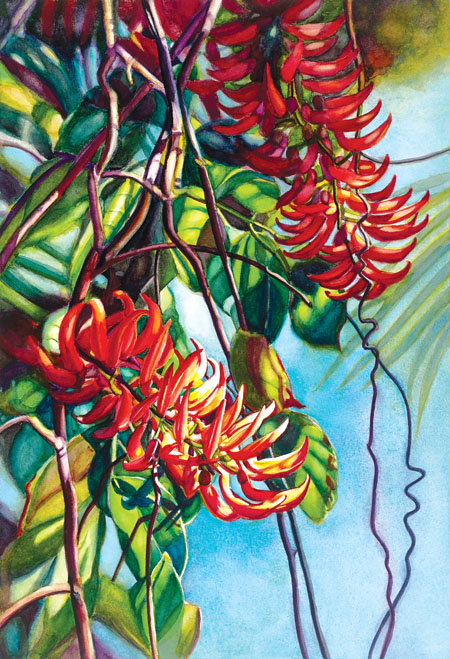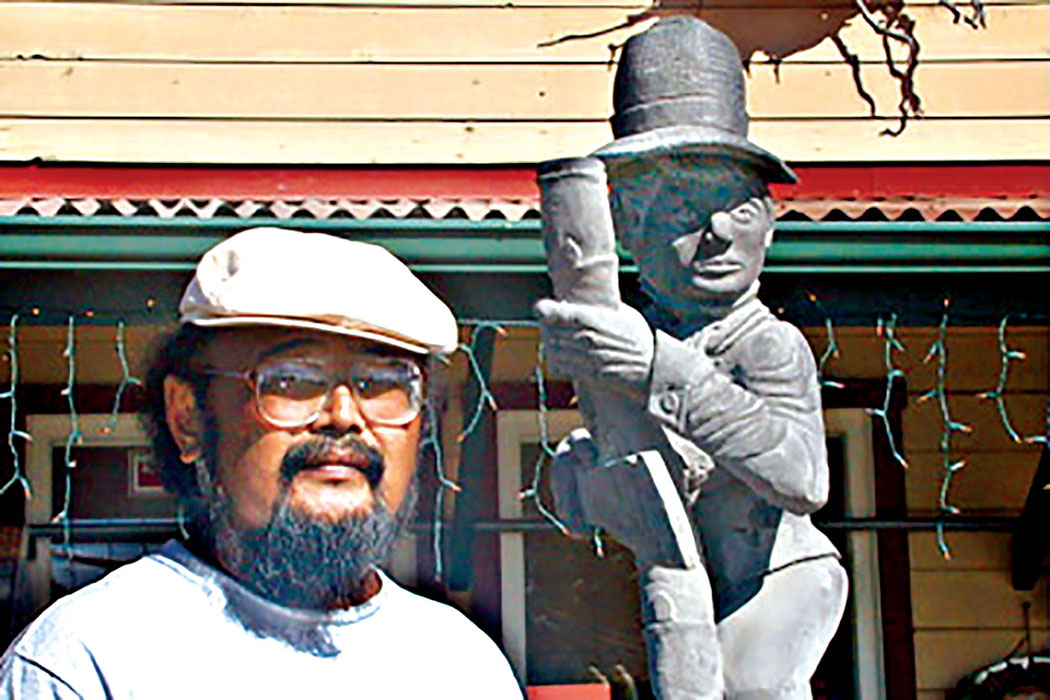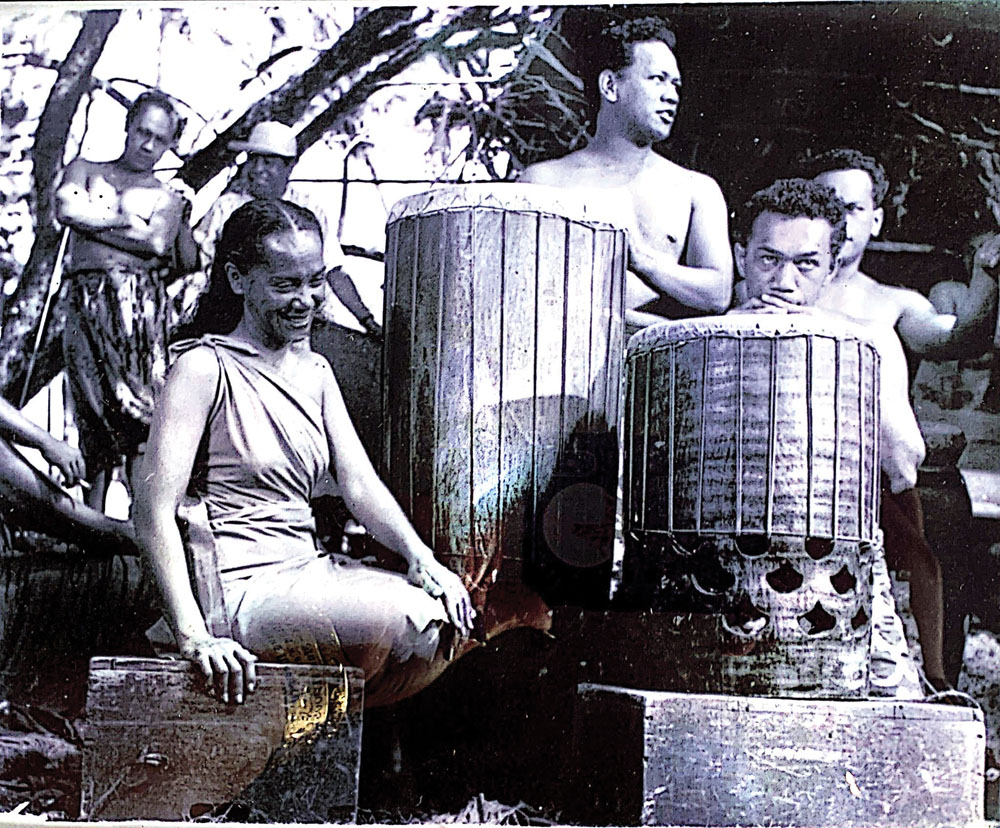
‘Iolani Luahine Festival Honors and Perpetuates Hula Tradition
 By Tiffany DeMasters
By Tiffany DeMasters
‘Iolani Luahine was more than just a hula dancer—she was a storyteller and teacher who shared and perpetuated the traditions of ancient Hawai‘i.
“It was like at times she became whatever she was dancing. You could really see it,” says Kumu Hula Iwalani Kalima. “Depending on what hula she was doing, it was like she was there in that moment where that hula was.”
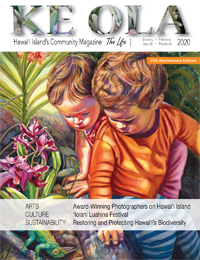
Aunty ‘Io is regarded as one of the most iconic hula practitioners of the 20th century. The way she moved and expressed herself in kahiko (ancient hula) and oli (chant) was captivating. Kumu Hula Iwalani recalls how she looked like a lady dancing on air. While dancers now embody some part of her style, the Hilo kumu adds, there is no one like her.
At the end of January 2020, the 17th annual He Lei Hiwa Nō ‘Iolani Luahine Hula Festival & Educational Challenge invites the young and old to share their knowledge of Aunty ‘Io through kahiko and oli at the Sheraton Kona Resort & Spa at Keauhou Bay. The festival is meant to perpetuate Aunty ‘Io’s legacy as well as the traditions of Kumu Hula George Na‘ope, who founded the festival with two of his students, Kumu Hula Iwalani and Pekelo Day.
In an effort to stay true to this vision, festival Executive Director Kumu Keala Ching made the competition an educational challenge, requiring all participants—except kūpuna—to perform a kahiko number that Aunty ‘Io danced during her lifetime. Throughout the process in preparation for the festival, Kumu Keala encouraged dancers to learn how Aunty ‘Io danced and emulated the stories.
“I want them to connect with Aunty ‘Io in any aspect,” says Kumu Keala. “In order to tell a story you need to become the story. It’s about really getting them to know what this culture is all about.”
The Woman, ‘Iolani Luahine
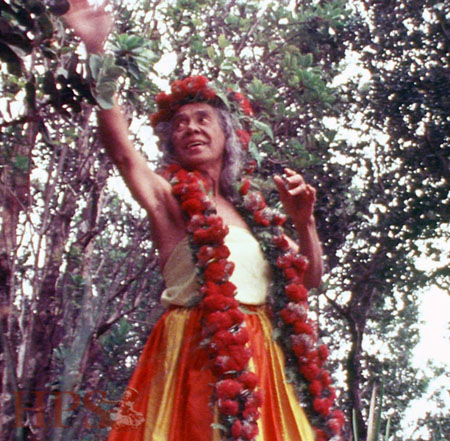
Aunty ‘Io was born on January 31, 1915 in Napo‘opo‘o. She was raised by her great-aunt Julia Keahi Luahine, who was also a kumu hula and one of the last royal dancers of King Kalākaua’s and Queen Lili‘uokalani’s court. She is descended from a long line of Kaua‘i dancers, trained to perform for the ali‘i. ‘Iolani Luahine was a kapu dancer, meaning there were dances choreographed specifically for her that only she was allowed to perform.
Aunty ‘Io’s roots run deep on Hawai‘i Island. She was a curator at Hulihe‘e Palace during the 1950s and again in the 1970s. She was a regular performer at Kona Village on Ali‘i Drive. Kumu Hula Iwalani recalled first meeting the famed dancer when she was 11 or 12 years old. She explains how she had the pleasure of staying in her home on the grounds of the palace.
“When I watched her dance I said, ‘Oh my gosh! I wanna be able to dance like her!’” Kumu Hula Iwalani reminisces. “She was amazing to watch. Her expressions, her feeling; you always knew that it was within her, her hula.”
‘Iolani took the hula to the National Folk Festival in Wolf Trap, Virginia three times, sharing the traditional art form with all its reverence to the goddess Laka. She is still regarded as not only an extraordinary hula dancer and kumu, but also a mystic, who communed with the elements around her and was in touch with the Hawaiian ancestors. Her death on December 10, 1978 was mourned across the state.
Not a Competition
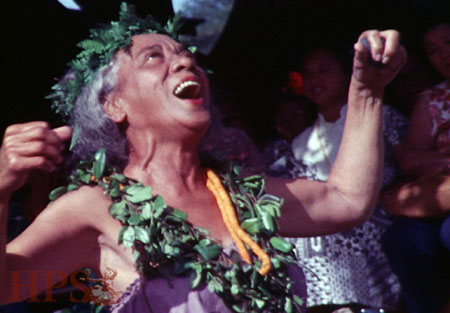
It was Kumu Hula George Na‘ope who was inspired by his kumu, ‘Iolani, to start the ‘Iolani Luahine Festival. He told fellow kumu how Aunty ‘Io didn’t like the word ‘competition’, so the festival was education-based, awarding scholarship money, not a trophy. “Building on that vision by performing a number that Aunty ‘Io danced, the dancers in this year’s festival will learn more about the art of hula and one of its greatest practitioners whoever lived,” says Kumu Keala.
Some of the required dances include: ‘O Kona Kai ‘Ōpua, No Luna i Ka Hale Kai, and Aia Lā ‘O Pele. The festival is about how kumu hula educate their students and how the students emulate those dancers. It’s also about how the dancers connect their dance to how they present themselves in costumes, implements, and lei. Kumu Keala’s hope is that students understand the relationship of their dress to the hula they perform. Soloists are also encouraged to write a research paper on ‘Iolani Luahine.
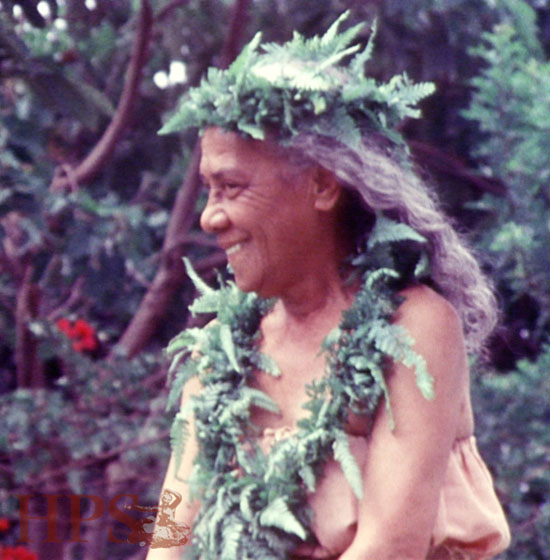
“It’s not about you challenging the next hālau, but putting your best foot forward to the judges,” says Kumu Keala. “The festival is how we perpetuate tradition. The focus is on legacy and tradition.”
Also new to this year’s festival is the E Ho‘okahi Kākou (united in the hula) project. This is designed to connect the hula judges to students in the educational system of Kona. Kumu Keala says it was Aunty ‘Io’s vision to bring kumu into schools and teach keiki (children) the traditions of hula kahiko. This project carries out that same vision. This year, Konawaena Middle School and High School were chosen for this project.
To encourage the educational challenge, all kumu hula and hālau participants were invited to view the different selected educational videos on ‘Iolani Luahine, as part of the Hula Preservation Society and to read ‘Iolani Luahine by Francis Haar to better familiarize themselves with Aunty ‘Io.
Everyone doesn’t get a gift, but they might learn a new oli. They might learn a new hula. And some people might not understand that, but that’s the kind of gift that can really educate, and by learning it, you challenge yourself to be better.

The Festival
The festival has always taken place at the end of January to coincide with Aunty ‘Io’s birthday on January 31. This year, the festival will start on January 24. During the day, judges will teach kahiko in the schools. Later in the evening, dancers will take the stage to kick off the educational challenge with kahiko.
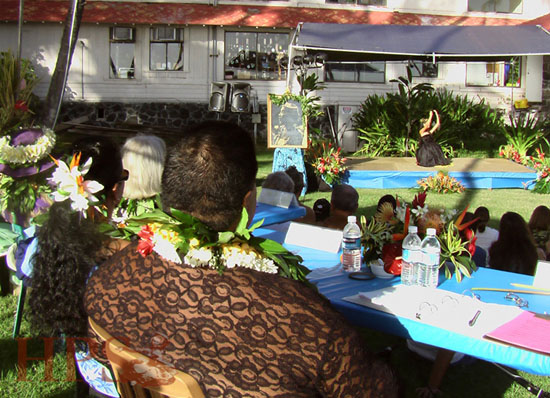
Friday will feature the mākua division (men and women ages 36–54) showcasing both hula kahiko and hula ‘auana along with the kūpuna division (men and women ages 55 and older) performing ‘auana. In the evening, the band Nā Hoa will perform. All proceeds from the concert go to the festival.
On January 25, the educational challenge will continue with the keiki division (boys and girls ages 6–12), ‘ōpio (girls and boys ages 13–19), kāne (men ages 20–35) and wahine (women ages 20–35) divisions. They will present their hula kahiko and hula ‘auana. Workshops will be available that Saturday and also on January 26.
Educational hula scholarships will be awarded to an overall soloist and to category winners, that they can continue their studies of hula. An educational research scholarship will be awarded to the individual (soloist) challenger who presents a research paper of ‘Iolani Luahine: her life, her legacy, traditions and her gift of hula.
Kumu Hula Iwalani was directly involved with the festival until 2008. Afterward, Kumu Iwalani entrusted the event to Kumu Keala, who first got involved as a Hawaiian language judge. His Kumu Hula, Lehua Kawaikapuokalani Hewett, was taught by Aunty ‘Io, making his involvement personal. Kumu Hula Iwalani has remained active in the festival as a judge, until now.
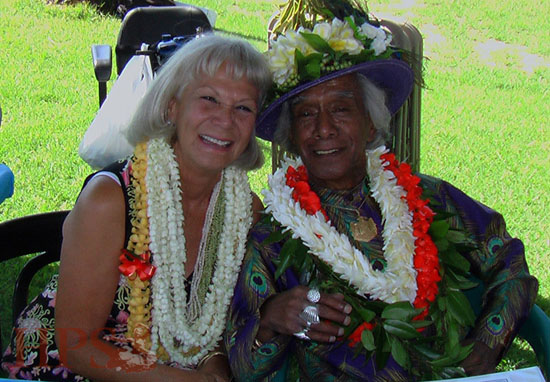
This year, Kumu Hula Iwalani wanted some of her dancers to participate in the educational challenge. She gave students, who are ho‘opa‘a (drummers and chanters) or alaka‘i (leaders), the challenge to take the students to the festival. Kumu Hula Iwalani explains it’s all about learning and educating yourself as much as possible to learn the Hawaiian culture, learn the hula, and learn the music.
Those who are recognized by judges receive a monetary scholarship to put toward furthering their education. The hope, Kumu Keala says, is those winners honor the donor’s wishes in perpetuating the hula.
Kumu Hula Iwalani wanted Kumu Keala to keep the festival going so people would be able to learn about Aunty ‘Io, ensuring that her traditions were kept up, not lost. She hopes that everyone will come out to see the beauty of this festival.
“It really would inspire you to learn a little bit more about your culture, about the hula. Because there’s so many people who think that hula is coconut bras and it’s not,” says Kumu Iwalani. ❖
For more information: iolaniluahinefestival.org, hulapreservation.org
The Hula Preservation Society participated in the festival four times (2005, 2007, 2008, 2009) when Uncle George was directly involved, as the society worked closely with him through HPS. HPS brought panel programs and film screenings to the festival. Filmmaker Tip Davis made a documentary on Kumu ‘Iolani’s life. It can be found online at https://vimeo.com/channels/hpsiolaniluahine.

